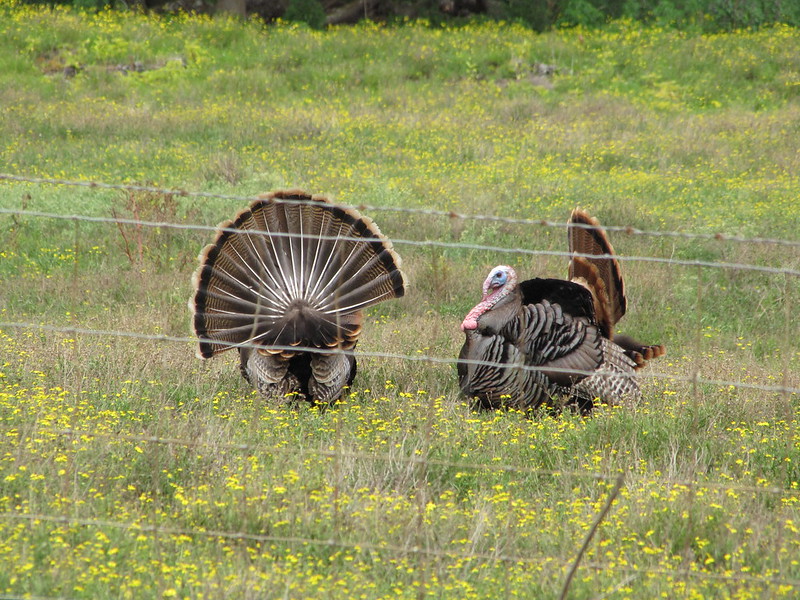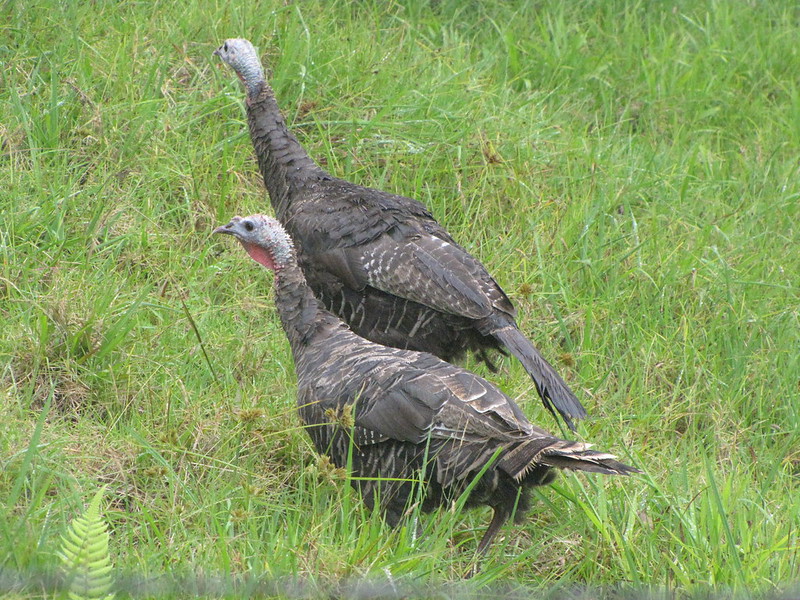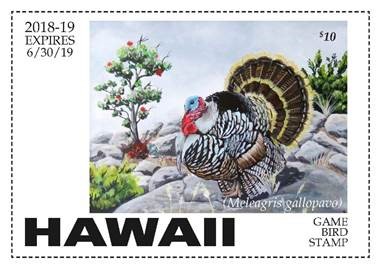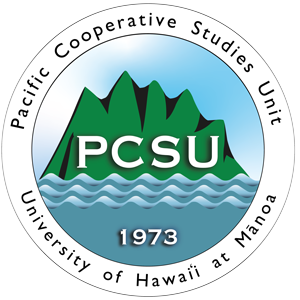With Thanksgiving only 12 days away, the traditional centerpiece of this holiday meal is likely on your mind. Stores will be flooded with them, the president will pardon one, old family recipes dusted off to make a favorite variation of it, and leftovers will be eaten for a week as sandwiches and jook. If you haven’t guessed it, I’m talking turkey. But did you know that outside of the freezer, this Thanksgiving icon resides in our islands?

According to the Bishop Museum archives, turkeys may be one of the first bird species introduced to our islands post-Western contact. In 1788, several birds arrived from China. In the 1800s, they were abundant on Oʻahu and Kauaʻi as escaped domestic birds formed wild, self-sustaining populations. During the 1930s, a particularly deadly parasite called blackhead disease swept through, greatly diminishing turkeys throughout the state. Efforts to reintroduce them as a game bird resumed to give us the turkeys we have today. The Department of Land and Natural Resources Division of Forestry and Wildlife (DLNR-DOFAW) currently manages wild turkey populations. Although they do not have estimates on the total population statewide, Hawaiʻi Island is thought to have the largest number of wild turkeys, and Lānaʻi has the most in Maui County. In fact, turkeys were so abundant on Lānaʻi in the 1900s, that they were harvested and distributed to other islands to provide the classic centerpiece to Thanksgiving and Christmas dinner. Today they are considered a nuisance by many residents of Hawaiʻi’s third smallest island- seen often along the roadside, in neighborhoods, on hotel properties, and even eating crabs on the beach!
The Maui gobblers are concentrated in the southern parts of the island, dispersed throughout ranch lands above Mākena, Wailea, and Kīhei. They have also been observed in ʻUlupalakua and one was even spotted near Kuihelani Highway recently. Although they are introduced species, they are not considered harmful invasive pests according to Shane De Mattos, Wildlife Biologist for the Department of Land and Natural Resources Division of Forestry and Wildlife. “Turkeys do not seem to make a substantial negative impact on our environment. The areas they frequent are not pristine ecosystems, and their numbers arenʻt so large that they are competing with natives” They do have the potential to spread invasive seeds, however, as they forage primarily on non-native grasses, seeds, and berries.

In regards to hunting turkeys on Maui, De Mattos says, “Turkeys are allowed to be harvested during the State game bird season, usually held November through January. On Maui island, they can only be harvested on private lands with a valid State of Hawaiʻi hunting license.” De Mattos encourages hunters and birders wanting to observe wild turkeys to make sure they have permission before entering private lands and to follow best sanitation practices to prevent the spread of invasive species or diseases like Rapid ʻŌhiʻa Death. “When hunting or going into wild areas, make sure to clean your boots of any mud, as well as wash and clean clothing and gear. Washing vehicles and tires before and after going to new areas is also a great practice,” De Mattos encourages, “Just doing these simple practices can create a huge positive impact to reduce the spread of invasive species in our islands.”

As for how they taste, Upcountry rancher and hunter, Steven Wong remarks, “You have to know how to cook them right, otherwise they’re dry, tough, and rubbery.” Wong grew up hunting and eating wild turkey and recommends cooking it with green papaya (similar to chicken papaya soup) or in an imu- but with added pork or beef fat to prevent it from drying out. For most of us, it may be best to stick to the Butterball.
Serena Fukushima is the Public Relations and Education Specialist for the Maui Invasive Species Committee. She holds a bachelor’s degree in environmental studies and a graduate degree in education from the University of Hawaii at Manoa. “Kiaʻi Moku, Guarding the Island” is written by the Maui Invasive Species Committee to provide information on protecting the island from invasive plants and animals that threaten our islands’ environment, economy and quality of life.
This article was originally published in the Maui News on November 13, 2021 as part of the Kia‘i Moku Column from the Maui Invasive Species Committee.
Read more Kiaʻi Moku articles.
